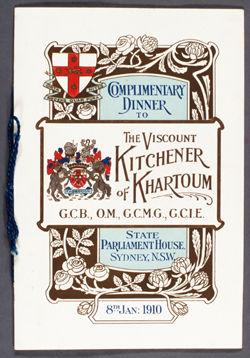Compulsory military service
Forging the Nation - Federation: the First 20 years
- Forging the Nation: home
- Federation
- National identity
- Seeking security
- The First World War
- Towards the future
- Australians
- Introduction
- Boer War
- Compulsory military service
- Australia's own fleet
- The Great White Fleet
- Cadets at the coronation
In 1911 Australia adopted a scheme for the compulsory military training of males. Boys aged twelve had to join the junior cadets, which were mainly school-based and did not wear uniforms. From fourteen until eighteen years they became members of the uniformed senior cadets. From eighteen until 26 years they became members of the citizens' military forces, requiring 16 days' paid training per year until they reached twenty, after which they had to attend an annual muster.
The Labor Party supported the scheme because it believed a people's militia was preferable to a standing army. The conservatives supported it because they considered any sort of army an imperial necessity. There was much opposition to the scheme from the wider labour movement and radical circles, who saw it as fostering militarism.

Australia: "I'll ease up on cricket and footy, and curb my gee-gee mania, until such time as I have taught myself to shoot straight."
From The Bulletin 5 January 1911, pg 1. By permission of National Library of Australia.
Under a compulsory military training scheme introduced in 1911, boys became members of the senior cadets until they passed into the citizens' military forces. The uniform for both was plain and simple, though cadets did not have epaulettes on their shirts.

Welcome Lord Kitchener!
Field Marshal Lord Kitchener visited Australia in 1910 to recommend a new scheme of military training based on conscription. His visit included civic receptions, parades and celebrations. There was little reference to his having imposed the death penalty on two Australian officers, Lieutenants "Breaker" Morant and Peter Handcock, when he was Commander-in-Chief during the Boer War.
AWM PROP 02030
